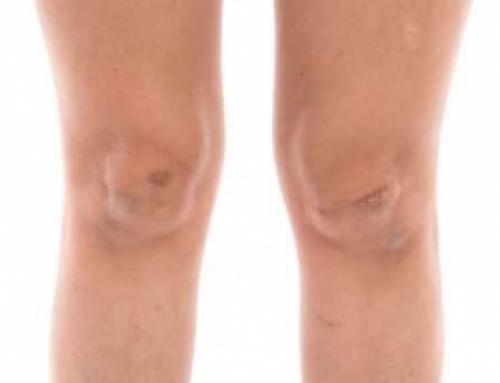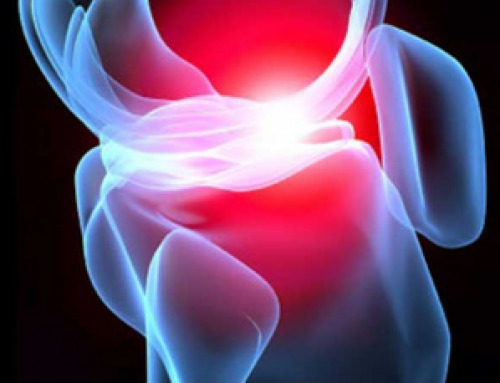As the largest joint of the human body, the knee is vital to normal everyday movement. The ligaments of the knees connect the femur (thigh bone) to the tibia and fibula (bones of the lower leg). Tears and sprains to the knee ligaments are very common sports injuries, such as football, soccer, and baseball.
Today, as a result of new medical technologies and innovative surgical techniques, the majority of athletes can successfully resume high levels of sports after sustaining multiple injuries to knee ligaments.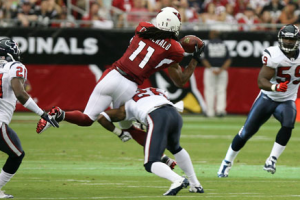
Collateral Ligaments
Collateral ligaments are located on the sides of the knees. On the inner aspect of the knee is the MCL (medial collateral ligament) and the LCL (lateral collateral ligament) is located on the outside. These ligaments brace the knee against any unusual movements, as well as control the side to side motions of the knee.
Cruciate Ligaments
Located on the interior of the knee, cruciate ligaments cross over each other forming an “X” shape with the ACL (anterior cruciate ligament) found in the front part of the knee and the PCL (posterior cruciate ligament) located at the back part of the joint. They control the forward and backward knee movements.
Knee Sprains
Since the knee relies solely on the above ligaments and the muscles surrounding them for stability, it is injured quite easily. Any hard contraction of a muscle and/or direct contact to the knee can cause injury to one of the knee ligaments. Ligament injuries are classified as “sprains,” and they are graded on an increasing 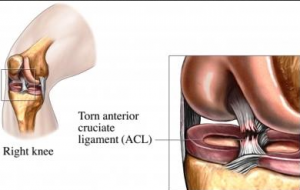 scale of severity.
scale of severity.
- Grade 1 Sprain: A ligament is damaged/injured mildly in the case of Grade 1 Sprain. While the ligament still aids in maintaining the knee joint’s stability, it has only been stretched slightly.
- Grade 2 Sprain: Also known as a partial ligament tear, a Grade 2 Sprain stretches the injured ligament to the extent that it actually becomes loosened.
- Grade 3 Sprain: Commonly called a complete ligament tear, the damaged knee ligament splits into two portions leaving the knee joint in a state of instability.
It is quite possible to concurrently damage two or more ligaments. Multiple ligament injuries can result in serious complications including significant disruption of the leg’s blood supply. In addition, combined knee ligament injuries can affect the nerve supply to the leg muscles.
In extremely severe instances of multiple ligament injuries, amputation can be the ultimate result (this is rare). Typically, the MCL is injured more frequently than the LCL and if someone injuries this ligament, other structures in the knee joint are often damaged as well.
Treatments for Combined Knee Ligament Injuries
Patients who are suspected of having suffered a multiple ligament injury will require a thorough physical 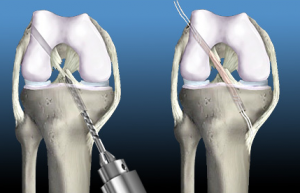 examination by an expert healthcare provider. Depending on the type and extent of their injury, a specialist such as a Beverly Hills Orthopedic Surgeon might consult with other medical specialists like a vascular specialist and/or microsurgeon.
examination by an expert healthcare provider. Depending on the type and extent of their injury, a specialist such as a Beverly Hills Orthopedic Surgeon might consult with other medical specialists like a vascular specialist and/or microsurgeon.
ACL injuries are typically treated with an ACL reconstruction in those who are active and desire to get back to the pre-injury level of activity. When a PCL is torn, it may require reconstruction as well. Both are vital structures for restoring the ability to twist, cut, accelerate and decelerate.
When a lateral collateral ligament is torn, the structure often will not heal on its own. So a repair may be in order. For a medial collateral ligament, though, the blood supply is better and it often heals on its own. Therefore, MCL tears are often left alone.
One additional injury that is typically seen with combined ligament injuries is a meniscal tear. While ligament injuries are being reconstructed, a meniscal tear should be addressed at the same time to facilitate rehab.

